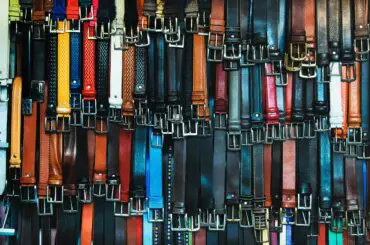Contents
How Long Should Jeans Last?
Jeans – those faithful companions in our wardrobes, always ready to help us look good and feel comfortable. Whether you’re a fan of classic blue denim or you adore experimenting with trendy cuts and colors, jeans are an essential part of our lives. But, have you ever wondered, “How long should jeans last?” It’s a valid question because, let’s face it, jeans can be an investment. In this comprehensive guide, we’ll delve into the factors that influence how long your favorite pair of jeans will last. We’ll also discuss signs that your jeans might be on their last legs and provide valuable tips on how to extend their lifespan.
Understanding Jeans Quality
Before we explore the longevity of jeans, it’s vital to understand the quality of the denim itself. Not all jeans are created equal, and the type of denim used plays a significant role in how long they’ll last.
Types of Denim
1. Raw Denim: Raw denim is the purest form of jeans material. It’s untreated and unwashed when it’s made into jeans. Raw denim is known for its durability and the unique fades it develops over time. This type of denim is a favorite among denim enthusiasts who appreciate the authentic, lived-in look that only raw denim can provide.
2. Distressed Denim: Distressed denim, on the other hand, is intentionally aged and treated to give it a worn-in, vintage appearance. While stylish and trendy, the pre-distressing process can weaken the fabric, potentially shortening its lifespan.
3. Stretch Denim: Stretch denim is a blend of traditional denim and stretchy fibers like elastane or spandex. While stretch denim offers flexibility and comfort, the added fibers can affect its longevity, as they may wear out faster than pure cotton denim.
Identifying Quality Denim
When it comes to jeans, the quality of the denim matters. Here are some key factors to consider when determining the quality of denim:
1. Weight and Thickness: High-quality jeans often have thicker denim, which is more durable and less prone to tears and abrasions. Look for jeans with a weight of 12 ounces or higher for longer-lasting wear.
2. Weave Pattern: The weave pattern of the denim affects its strength. A tight and uniform weave is a sign of better quality, as it indicates the denim can withstand more wear and tear.
3. Fabric Composition: Pure cotton denim tends to be more durable than denim blends. Check the label to ensure you’re getting a higher percentage of cotton, as it’s known for its strength and longevity.
Now that you can identify quality denim let’s explore the various factors that influence how long your jeans will last.
Factors Influencing Jeans Longevity
Jeans can last a significant amount of time if you take care of them properly. However, several factors can influence their longevity.
Frequency of Wear
How often you wear your jeans has a direct impact on how long they last. If you’re wearing the same pair of jeans every day, they’re naturally going to wear out faster than if you rotate them with other pairs.
Imagine you have two pairs of jeans: one for daily wear and another for special occasions. By alternating between the two, you’ll significantly extend the life of both pairs. Your daily pair will experience less wear and tear, allowing you to enjoy them for years to come.
Proper Washing and Care
Jeans don’t need to be washed as frequently as other clothing items. Overwashing can lead to faster wear and tear. Here are some washing guidelines to extend the life of your jeans:
1. Washing Frequency: Unless your jeans are visibly dirty or have an odor, you can wear them several times before washing. Spot cleaning can also be effective for minor stains.
Imagine you’ve worn your jeans to a casual dinner with friends, and they still look fresh afterward. Instead of tossing them in the laundry immediately, simply hang them up to air out. By doing this, you’re preserving the color and fabric quality while conserving water and energy.
2. Washing Techniques: When it’s time to wash, turn your jeans inside out to preserve the color and prevent excessive fading. Use a gentle cycle with cold water, and avoid using excessive detergent, which can break down the denim fibers. Additionally, consider air-drying your jeans instead of using a dryer, as excessive heat can weaken the fabric.
Imagine your favorite pair of jeans has acquired a few minor stains after a weekend adventure. Rather than subjecting them to a full wash, you decide to spot clean the affected areas. Using a damp cloth and a bit of mild detergent, you gently remove the stains without exposing your jeans to the rigors of a washing machine. This thoughtful care routine keeps your jeans looking great for years.
Fit and Sizing
The fit of your jeans matters when it comes to longevity. Jeans that are too tight can experience stress at the seams and crotch area, leading to premature damage. On the other hand, overly loose jeans can sag and drag on the ground, causing fraying and damage.
Imagine you have two pairs of jeans: one that fits you perfectly and another that’s a bit too tight. You wear the tight pair to a music festival, and by the end of the day, you notice stress marks along the seams. In contrast, the well-fitting pair remains intact and comfortable throughout the event. Choosing the right fit not only ensures comfort but also extends the life of your jeans.
Brand and Price Point
While expensive doesn’t always equate to better quality, investing in well-known, reputable brands can be a good indicator of jeans that are built to last. These brands often use higher-quality materials and better construction techniques.
Imagine you’re shopping for a new pair of jeans. You come across two options: one from a renowned denim brand with a slightly higher price tag and another from an unknown brand at a bargain price. By choosing the reputable brand, you’re more likely to get a pair of jeans that are crafted with care and designed for durability. In the long run, this investment pays off as your jeans withstand the test of time.
Lifestyle and Activities
Consider your lifestyle and the activities you engage in while wearing your jeans. If you’re involved in physically demanding work or sports while wearing your jeans, they may wear out faster than if you wear them for more casual activities.
Imagine you work in construction and wear jeans to the job site daily. Your jeans are exposed to dust, debris, and the rigors of physical labor. In this scenario, it’s crucial to choose jeans that are specifically designed for workwear to ensure they can handle the demands of your profession. By selecting the right jeans for your lifestyle, you can enjoy both comfort and durability.
Signs Your Jeans Need Replacement
Now, let’s talk about the telltale signs that your jeans might be nearing the end of their lifespan.
Fading and Color Changes
Over time, jeans naturally fade, especially in areas that rub against your body or receive frequent friction. While fading can give jeans character, excessive or uneven fading can make them look worn out.
Imagine you’ve owned a pair of dark indigo jeans for several years. As you inspect them, you notice that the color has gradually lightened, particularly in areas like the thighs and knees. While this fading adds a unique patina to your jeans, it’s important to recognize when it becomes excessive and affects their overall appearance.
Excessive Wear and Tear
Inspect your jeans for signs of wear and tear, such as fraying at the cuffs or holes in the knees. These are clear indicators that it might be time to replace them.
Picture this: you’ve been wearing your favorite jeans for ages, and they’ve been through countless adventures with you. However, as you bend down to tie your shoelaces, you notice a tear near the knee. While it’s tempting to continue wearing them as a testament to your shared experiences, excessive wear and tear can compromise both comfort and style.
Loss of Elasticity
If your jeans contain stretch fibers like elastane or spandex, you might notice that they lose their elasticity over time. When they no longer snap back into shape, it’s a sign that they’ve worn out.
Imagine you have a pair of stretch jeans that once hugged your curves perfectly. However, with frequent wear and washing, you notice that they’ve become saggy and no longer provide the comfortable fit they once did. This loss of elasticity is a clear indicator that it’s time to bid farewell to your beloved stretch jeans.
Changes in Fit
If your jeans no longer fit comfortably, it could be due to stretching, shrinking, or changes in your body shape. Ill-fitting jeans can be uncomfortable and may indicate that it’s time for a new pair.
Think about the jeans you wore when you first started your fitness journey. Over time, as you’ve become more active and made positive lifestyle changes, your body has evolved. While this is a fantastic achievement, it’s also meant that your old jeans no longer fit comfortably. Embrace your progress and invest in a new pair of jeans that flatter your current body shape.
Lifestyle Changes
As your lifestyle changes, your jeans’ durability needs may change as well. If you’ve taken up a more active lifestyle or have started a physically demanding job, your jeans might wear out faster than they used to.
Consider this scenario: you’ve recently embraced a love for hiking and outdoor adventures. While your old jeans served you well for everyday wear, they’re not designed to withstand the rugged terrain and occasional encounters with thorns and branches. In this case, it’s wise to invest in a pair of durable, outdoor-specific jeans that can keep up with your newfound passion.
Extending the Life of Your Jeans
Want to make your jeans last longer? Here are some tips and tricks to extend their lifespan:
Care and Maintenance Tips
1. Washing Guidelines: Follow the washing guidelines mentioned earlier to minimize stress on your jeans and preserve their color.
2. Proper Storage: Hang your jeans or fold them neatly to prevent creasing. Avoid overstuffing your closet, as it can lead to wrinkles and damage.
3. Repairs and Alterations: Don’t toss your jeans at the first sign of damage. Consider getting them repaired or altered by a professional to prolong their life.
Imagine you have a beloved pair of jeans that have developed a small tear near the pocket. Instead of discarding them, you take them to a skilled tailor who expertly repairs the tear. This simple alteration not only saves your favorite jeans from the landfill but also ensures you can continue wearing them with pride.
Rotate Your Jeans
Rather than wearing the same pair of jeans every day, create a rotation schedule with multiple pairs. This gives your jeans a chance to “rest” between wears and reduces the wear and tear on any single pair.
Picture this: you have three pairs of jeans in your wardrobe – one for casual outings, one for work, and one for special occasions. By rotating them regularly, you distribute the wear and tear evenly among the three pairs. As a result, each pair maintains its quality and lasts longer.
Investing in High-Quality Jeans
When shopping for jeans, consider investing in high-quality options, even if they come with a higher price tag. Well-made jeans are designed to withstand the test of time, making them a more cost-effective choice in the long run.
Imagine you’re shopping for a new pair of jeans. You come across two options: one from a renowned denim brand with a slightly higher price tag and another from an unknown brand at a bargain price. By choosing the reputable brand, you’re more likely to get a pair of jeans that are crafted with care and designed for durability. In the long run, this investment pays off as your jeans withstand the test of time.
Sustainable Practices and Jeans Longevity
In an era of increasing sustainability awareness, it’s worth considering how your jeans fit into the larger picture.
Environmental Impact of Jeans Production
The production of jeans can have a significant environmental impact, from water usage to chemical treatments. Being mindful of sustainable denim brands can reduce your jeans’ environmental footprint.
Imagine you’re on a mission to reduce your carbon footprint. When shopping for jeans, you prioritize brands that use eco-friendly production practices, such as reducing water usage and avoiding harsh chemical treatments. By supporting these brands, you contribute to a more environmentally responsible fashion industry.
Choosing Sustainable Jeans
Look for jeans made by brands committed to sustainable practices, such as using organic cotton, reducing water usage, and minimizing chemical treatments. By supporting these brands, you not only get a high-quality pair of jeans but also contribute to a more eco-friendly fashion industry.
Imagine you’re shopping for a new pair of jeans, and you come across a brand that proudly promotes its use of organic cotton and sustainable manufacturing processes. By choosing jeans from this brand, you’re not only making a fashion statement but also aligning your choices with your values for a more sustainable future.
Repurposing and Upcycling Old Jeans
Don’t throw away your old jeans. Consider repurposing them into new items, such as cutoff shorts, denim jackets, or even stylish handbags. Upcycling not only reduces waste but also gives your old jeans a new lease on life.
Imagine you have a pair of jeans that have seen better days, with worn-out knees and frayed cuffs. Instead of discarding them, you decide to get creative. With some basic sewing skills, you transform them into fashionable denim shorts that are perfect for the upcoming summer. This act of upcycling not only reduces textile waste but also adds unique pieces to your wardrobe.
Personal Stories and Testimonials
To offer a glimpse into real-life experiences, here are some stories and tips from long-time jeans enthusiasts who have mastered the art of making jeans last:
Real-Life Experiences of Jeans Longevity
Meet Sarah, who has owned the same pair of jeans for over a decade. She shares her secrets to preserving denim and the sentimental value her jeans hold.
“My jeans have been with me through thick and thin – quite literally. I’ve followed the proper washing guidelines religiously, and I even had them professionally repaired when they developed a hole. They’ve become a part of my story, and I can’t imagine parting with them.”
Discover the hacks and tricks that dedicated jean lovers use to ensure their favorite pairs stay in great condition for as long as possible.
- Tip #1: Use vinegar to set the color: Mix a tablespoon of white vinegar with cold water and soak your jeans for 30 minutes before the first wash. This helps set the color and prevents excessive fading.
- Tip #2: Freeze your jeans: Instead of washing your jeans too frequently, try freezing them. Place your jeans in a plastic bag and leave them in the freezer overnight. This kills odor-causing bacteria and refreshes your jeans.
- Tip #3: Store with care: When storing your jeans, fold them neatly or hang them. Avoid overstuffing your closet, as this can lead to wrinkles and creases.

Conclusion
So, how long should jeans last? The answer isn’t a one-size-fits-all, as it depends on various factors. However, with the right knowledge and practices, you can significantly extend the lifespan of your jeans. Remember that well-made jeans, mindful care, and sustainable choices can make your denim collection a long-lasting and eco-friendly part of your wardrobe. The next time you slip into your favorite pair of jeans, you’ll know exactly how to make them last through many more adventures. Keep your jeans looking great, and they’ll return the favor by being your trusted companions for years to come.





